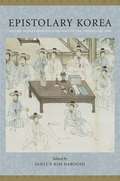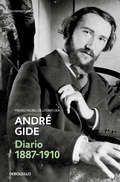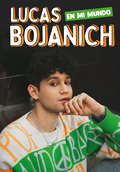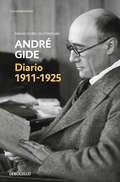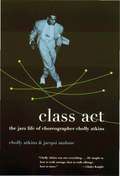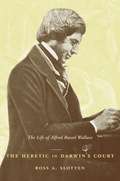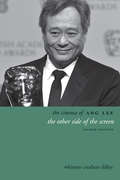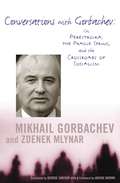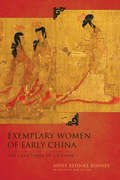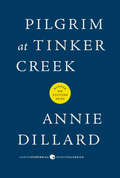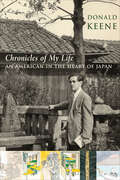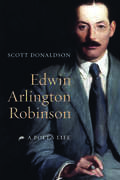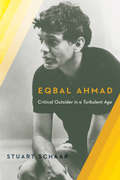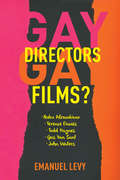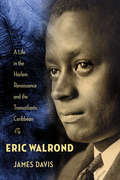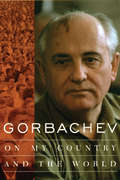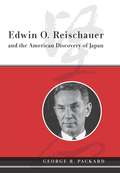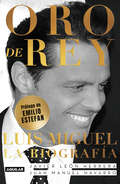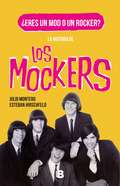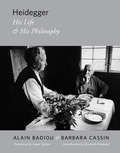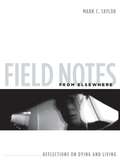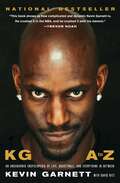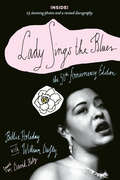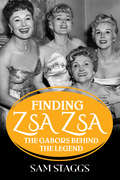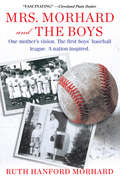- Table View
- List View
Epistolary Korea: Letters in the Communicative Space of the Chosôn, 1392-1910
by Jahyun Kim HaboushBy expanding the definition of "epistle" to include any writing that addresses the intended receiver directly, JaHyun Kim Haboush introduces readers to the rich epistolary practice of Chos?n Korea. The Chos?n dynasty (1392-1910) produced an abundance of epistles, writings that mirror the genres of neighboring countries (especially China) while retaining their own specific historical trajectory. Written in both literary Chinese and vernacular Korean, the writings collected here range from royal public edicts to private letters, a fascinating array that blurs the line between classical and everyday language and the divisions between men and women. Haboush's selections also recast the relationship between epistolography and the concept of public and private space.Haboush groups her epistles according to where they were written and read: public letters, letters to colleagues and friends, social letters, and family letters. Then she arranges them according to occasion: letters on leaving home, deathbed letters, letters of fiction, and letters to the dead. She examines the mechanics of epistles, their communicative space, and their cultural and political meaning. With its wholly unique collection of materials, Epistolary Korea produces more than a vivid chronicle of pre- and early modern Korean life. It breaks new ground in establishing the terms of a distinct, non-European form of epistolography.
Diario 1887-1905
by André GidePrimera entrega de la edición en cuatro volúmenes del monumental Diario de André Gide, considerado su obra cumbre. Se ha dicho que el Diario de André Gide llevó el género de la literatura íntima a su máxima expresión, y no cabe duda de que esta crónica pormenorizada de sus días nos abre la puerta a la vida pública y privada de una figura central de la cultura francesa y europea del siglo XX. En sus páginas aparecen las numerosas y a menudo contradictoras facetas del autor: su educación protestante, su acercamiento al catolicismo, su rechazo posterior de ambos, su matrimonio sin consumar con su prima Madelaine, la reivindicación de homosexualidad y sus opiniones políticas, incluida su crítica al estalinismo y su oposición a la intervención colonial francesa en África. Esta primera entrega, que comienza por las entradas escritas a los diciocho años de edad, es también un documento de la edución sentimental e intelectual de Gide, en el que el escritor en ciernes va dejando constancia de sus afinidades y afiliaciones artisticas hasta escribir sus primeros libros importantes. Acerca de la obra:«Mi gusto por Gide se redobla al leer su Diario.»Albert Camus «Es una excelente noticia que la editorial Debolsillo haya decidido publicar íntegramente dichos diarios [...] de la mano del crítico y editor Ignacio Echevarría, autor del excelente estudio introductorio que acompaña cada volumen.»Anna Caballé, Babelia «El Journal de Gide cuenta la historia de alguien que se pasó la vida buscando realizar su obra maestra y no la logró. O tal vez sí, tal vez sí la logró, y su obra maestra sería entonces paradójicamente ese Journal que iba reflejando la búsqueda de su obra cumbre.»Enrique Vila-Matas «Obra y Vida: el Journal, que algunos consideraban la obra cumbre de Gide, la más completa, la mas perdurable, está en el centro deesa encrucijada.»Laura Freixas «Nunca hay que leer las frases del diario de Gide como si fuesen simples constataciones, aun cuando estén en indicativo: son deseos, plegarias, órdenes, himnos, remordimientos, inculpaciones.»Jean-Paul Sartre «El Diario está escrito mucho más como un diálogo que como un monólogo. Es menos una confesión que el relato de un alma que se busca, se responde, conversa consigo misma.»Roland Barthes «Lo que tiene lugar en el Diario, considerado en su conjunto, lo que en definitiva lo sostiene y cohesiona, viene a ser lo que cabe entender por una épica de la sinceridad. La ardua conquista de una expresión cabal, verdadera y honesta de sí mismo.»Ignacio Echevarría «Una obra de arte [...], una creación.»Georges Simenon
En mi mundo
by Lucas BojanichNo te pierdas el primer libro de Lucas Bojanich. Ya sabes quién soy, pero... ¿eso que sabes es toda la verdad? ¿O solo una parte?¿Quién es ese chico que va caminando por la calle con sus cascos y la cabeza siempre en otro planeta?¿Quién era ese niño que se distraía en clase pensando en sus cosas, creando sus propios mundos? Conoces al Lucas de las redes, pero detrás de todo eso, ¿sabes quién soy? Si me acompañas en este viaje, te contaré de qué planeta vengo, a qué planeta voy, y, lo más importante, cómo he conseguido llegar hasta aquí manteniéndome siempre fi el a mí mismo. ¿Y tú? ¿Hay algún planeta al que quieras llegar? Quizá después de este viaje para conocerme a mí, acabes conociéndote un poco a ti mismo también. ¿Te animas?
Diario 1906-1925
by André GideSegunda entrega de la monumental edición del Diario de Gide en cuatro volúmenes, considerado su obra cumbre. En el segundo volumen de su Diario, André Gide alcanza la madurez como escritor y continua reflexionando sobre una obra literaria que, con lirismo, sutileza y vocación experimental, avanza desde El retorno del hijo pródigo hasta Los falsificadores de moneda, quizá su obra más conocida y sin duda una de las más influyentes del siglo XX. El escritor explora y analiza en estas páginas cuestiones de conciencia vinculadas a su matrimonio blanco, su fe vacilante y su homosexualidad, pero también pasa revista a uno de los períodos más convulsos de la historia del siglo XX, cuando la sociedad europea va dejando atrás la despreocupación de la belle époque para internarse en el cruento panorama de la Gran Guerra y finalmente superarla. Acerca de la obra:«Mi gusto por Gide se redoblaal leer su Diario.»Albert Camus «Es una excelente noticia que la editorial Debolsillo haya decidido publicar íntegramente dichos diarios [...] de la mano del crítico y editor Ignacio Echevarría, autor del excelente estudio introductorio que acompaña cada volumen.»Anna Caballé, Babelia «El Journal de Gide cuenta la historia de alguien que se pasó la vida buscando realizar su obra maestra y no la logró. O tal vez sí, tal vez sí la logró, y su obra maestra sería entonces paradójicamente ese Journal que iba reflejando la búsqueda de su obra cumbre.»Enrique Vila-Matas «Obra y Vida: el Journal, que algunos consideraban la obra cumbre de Gide, la más completa, la mas perdurable, está en el centro de esa encrucijada.»Laura Freixas «Nunca hay que leer las frases del diario de Gide como si fuesen simples constataciones, aun cuando estén en indicativo: son deseos, plegarias, órdenes, himnos, remordimientos, inculpaciones.»Jean-Paul Sartre «El Diario está escrito mucho más como un diálogo que como un monólogo. Es menos una confesión que el relato de un alma que se busca, se responde, conversa consigo misma.»Roland Barthes «Lo que tiene lugar en el Diario, considerado en su conjunto, lo que en definitiva lo sostiene y cohesiona, viene a ser lo que cabe entender por una épica de la sinceridad. La ardua conquista de una expresión cabal, verdadera y honesta de sí mismo.»Ignacio Echevarría «Una obra de arte [...], una creación.»Georges Simenon
Class Act: The Jazz Life of Choreographer Cholly Atkins
by Jacqui Malone Cholly AtkinsCholly Atkins's career has spanned an extraordinary era of American dance. He began performing during Prohibition and continued his apprenticeship in vaudeville, in nightclubs, and in the army during World War II. With his partner, Honi Coles, Cholly toured the country, performing with such jazz masters as Louis Armstrong, Cab Calloway, and Count Basie. As tap reached a nadir in the fifties, Cholly created the new specialization of "vocal choreography," teaching rhythm-and-blues singers how to perform their music by adding rhythmical dance steps drawn from twentieth-century American dance, from the Charleston to rhythm tap. For the burgeoning Motown record label, Cholly taught such artists as the Supremes, Smokey Robinson and the Miracles, the Temptations, Gladys Knight and the Pips, and Marvin Gaye to command the stage in ways that would enhance their performances and "sell" their songs.Class Act tells of Cholly's boyhood and coming of age, his entry into the dance world of New York City, his performing triumphs and personal tragedies, and the career transformations that won him gold records and a Tony for choreographing Black and Blue on Broadway. Chronicling the rise, near demise, and rediscovery of tap dancing, the book is both an engaging biography and a rich cultural history.
The Heretic in Darwin’s Court: The Life of Alfred Russel Wallace
by Ross SlottenDuring their lifetimes, Alfred Russel Wallace and Charles Darwin shared credit and fame for the independent and near-simultaneous discovery of natural selection. Together, the two men spearheaded one of the greatest intellectual revolutions in modern history, and their rivalry, usually amicable but occasionally acrimonious, forged modern evolutionary theory. Yet today, few people today know much about Wallace.The Heretic in Darwin's Court explores the controversial life and scientific contributions of Alfred Russel Wallace—Victorian traveler, scientist, spiritualist, and co-discoverer with Charles Darwin of natural selection. After examining his early years, the biography turns to Wallace's twelve years of often harrowing travels in the western and eastern tropics, which place him in the pantheon of the greatest explorer-naturalists of the nineteenth century. Tracing step-by-step his discovery of natural selection—a piece of scientific detective work as revolutionary in its implications as the discovery of the structure of DNA—the book then follows the remaining fifty years of Wallace's eccentric and entertaining life. In addition to his divergence from Darwin on two fundamental issues—sexual selection and the origin of the human mind—he pursued topics that most scientific figures of his day conspicuously avoided, including spiritualism, phrenology, mesmerism, environmentalism, and life on Mars.Although there may be disagreement about his conclusions, Wallace's intellectual investigations into the origins of life, consciousness, and the universe itself remain some of the most inspired scientific accomplishments in history. This authoritative biography casts new light on the life and work of Alfred Russel Wallace and the importance of his twenty-five-year relationship with Charles Darwin.
The Cinema of Ang Lee: The Other Side of the Screen (Directors' Cuts)
by Whitney Crothers DilleyBorn in Taiwan, Ang Lee is one of cinema's most versatile and daring directors. His ability to cut across cultural, national, and sexual boundaries has given him recognition in all corners of the world, the ability to work with complete artistic freedom whether inside or outside of Hollywood, and two Academy Awards for Best Director. He has won astounding critical acclaim for Crouching Tiger, Hidden Dragon (2000), which transformed the status of martial arts films across the globe, Brokeback Mountain (2005), which challenged the reception and presentation of homosexuality in mainstream cinema, and Life of Pi (2012), Lee's first use of groundbreaking 3D technology and his first foray into complex spiritual themes.In this volume, the only full-length study of Lee's work, Whitney Crothers Dilley analyzes all of his career to date: Lee's early Chinese trilogy films (including The Wedding Banquet, 1993, and Eat Drink Man Woman, 1994), period drama (Sense and Sensibility, 1995), martial arts (Crouching Tiger, Hidden Dragon, 2000), blockbusters (Hulk, 2003), and intimate portraits of wartime psychology, from the Confederate side of the Civil War (Ride with the Devil, 1999) to Japanese-occupied Shanghai (Lust/Caution, 2007). Dilley examines Lee's favored themes such as father/son relationships and intergenerational conflict in The Ice Storm (1997) and Taking Woodstock (2009). By looking at the beginnings of Lee's career, Dilley positions the filmmaker's work within the roots of the Taiwan New Cinema movement, as well as the larger context of world cinema. Using suggestive readings of both gender and identity, this new study not only provides a valuable academic resource but also an enjoyable read that uncovers the enormous appeal of this acclaimed director.
Conversations with Gorbachev: On Perestroika, the Prague Spring, and the Crossroads of Socialism
by Mikhail Gorbachev Zdenek MlynarMikhail Gorbachev and Zdenek Mlynar were friends for half a century, since they first crossed paths as students in 1950. Although one was a Russian and the other a Czech, they were both ardent supporters of communism and socialism. One took part in laying the groundwork for and carrying out the Prague spring; the other opened a new political era in Soviet world politics.In 1993 they decided that their conversations might be of interest to others and so they began to tape-record them. This book is the product of that "thinking out loud” process. It is an absorbing record of two friends trying to explain to one another their views on the problems and events that determined their destinies. From reminiscences of their starry-eyed university days to reflections on the use of force to "save socialism” to contemplation of the end of the cold war, here is a far more candid picture of Gorbachev than we have ever seen before.
Exemplary Women of Early China: The Lienü zhuan of Liu Xiang (Translations from the Asian Classics)
by Anne Behnke KinneyIn early China, was it correct for a woman to disobey her father, contradict her husband, or shape the public policy of a son who ruled over a dynasty or state? According to the Lienü zhuan, or Categorized Biographies of Women, it was not only appropriate but necessary for women to step in with wise counsel when fathers, husbands, or rulers strayed from the path of virtue. Compiled toward the end of the Former Han dynasty (202 BCE-9 CE) by Liu Xiang (79-8 BCE), the Lienü zhuan is the earliest extant book in the Chinese tradition solely devoted to the education of women. Far from providing a unified vision of women's roles, the text promotes a diverse and sometimes contradictory range of practices. At one extreme are exemplars resorting to suicide and self-mutilation as a means to preserve chastity and ritual orthodoxy. At the other are bold and outspoken women whose rhetorical mastery helps correct erring rulers, sons, and husbands. The text provides a fascinating overview of the representation of women's roles in early legends, formal speeches on statecraft, and highly fictionalized historical accounts during this foundational period of Chinese history.Over time, the biographies of women became a regular feature of dynastic and local histories and a vehicle for expressing and transmitting concerns about women's social, political, and domestic roles. The Lienü zhuan is also rich in information about the daily life, rituals, and domestic concerns of early China. Inspired by its accounts, artists across the millennia have depicted its stories on screens, paintings, lacquer ware, murals, and stone relief sculpture, extending its reach to literate and illiterate audiences alike.
Pilgrim at Tinker Creek (Famous Authors Series)
by Annie DillardPilgrim at Tinker Creek is the story of a dramatic year in Virginia's Blue Ridge valley. <P><P> Annie Dillard sets out to see what she can see. What she sees are astonishing incidents of "mystery, death, beauty, violence."
Chronicles of My Life: An American in the Heart of Japan
by Donald Keene"I sometimes think that if, as the result of an accident, I were to lose my knowledge of Japanese, there would not be much left for me. Japanese, which at first had no connection with my ancestors, my literary tastes, or my awareness of myself as a person, has become the central element of my life."In this eloquent and wholly absorbing memoir, the renowned scholar Donald Keene shares more than half a century of his extraordinary adventures as a student of Japan. Keene begins with an account of his bittersweet childhood in New York; then he describes his initial encounters with Asia and Europe and the way in which World War II complicated that experience. He captures the sights, scents, and sounds of Japan as they first enveloped him, and talks of the unique travels and well-known intellectuals who later shaped the contours of his academic career.Keene traces the movement of his passions with delicacy and subtlety, deftly weaving his love for Japan into a larger narrative about identity and home and the circumstances that led a Westerner to find solace in a country on the opposite side of the world. Chronicles of My Life is not only a fascinating tale of two cultures colliding, but also a thrilling account of the emotions and experiences that connect us all, regardless of our individual origins.
Edwin Arlington Robinson: A Poet's Life
by Scott DonaldsonAt the time of his death in 1935, Edwin Arlington Robinson was regarded as the leading American poet-the equal of Frost and Stevens. In this biography, Scott Donaldson tells the intriguing story of this poet's life, based in large part on a previously unavailable trove of more than 3,000 personal letters, and recounts his profoundly important role in the development of modern American literature. Born in 1869, the youngest son of a well-to-do family in Gardiner, Maine, Robinson had two brothers: Dean, a doctor who became a drug addict, and Herman, an alcoholic who squandered the family fortune. Robinson never married, but he fell in love as many as three times, most lastingly with the woman who would become his brother Herman's wife. Despite his shyness, Robinson made many close friends, and he repeatedly went out of his way to give them his support and encouragement. Still, it was always poetry that drove him. He regarded writing poems as nothing less than his calling-what he had been put on earth to do. Struggling through long years of poverty and neglect, he achieved a voice and a subject matter all his own. He was the first to write about ordinary people and events-an honest butcher consumed by grief, a miser with "eyes like little dollars in the dark," ancient clerks in a dry goods store measuring out their days like bolts of cloth. In simple yet powerful rhetoric, he explored the interior worlds of the people around him. Robinson was a major poet and a pivotal figure in the course of modern American literature, yet over the years his reputation has declined. With his biography, Donaldson returns this remarkable talent to the pantheon of great American poets and sheds new light on his enduring legacy.
Eqbal Ahmad: Critical Outsider in a Turbulent Age
by Stuart SchaarEqbal Ahmad (1930?–1999) was a bold and original activist, journalist, and theorist who brought uncommon perspective to the rise of militant Islam, the conflict in Kashmir, the involvement of the United States in Vietnam, and the geopolitics of the Cold War. A long-time friend and intellectual collaborator of Ahmad, Stuart Schaar presents in this book previously unseen materials by and about his colleague, having traveled through the United States, India, Pakistan, western Europe, and North Africa to connect Ahmad's experiences to the major currents of modern history.Ahmad was the first to recognize that former ally Osama bin Laden would turn against the United States. He anticipated the rapidly shifting loyalties of terrorists and understood that overthrowing Saddam Hussein would provoke violence and sectarian strife in Iraq. Ahmad had great compassion for the victims of the proxy wars waged by the leading Cold War powers, and he frequently championed unpopular causes, such as the need to extend the rights of Palestinians and protect Bosnians and Kosovars in a disintegrating Yugoslavia. Toward the end of his life, Ahmad worked tirelessly to broker a peace between India and Pakistan and to prevent the spread of nuclear weapons throughout the subcontinent. As novel and necessary as ever, Ahmad's remarkable vision is here preserved and extended to reveal the extent to which he was involved in the political and historical conflicts of his time.
Gay Directors, Gay Films?: Pedro Almodóvar, Terence Davies, Todd Haynes, Gus Van Sant, John Waters
by Emanuel LevyThrough intimate encounters with the life and work of five contemporary gay male directors, this book develops a framework for interpreting what it means to make a gay film or adopt a gay point of view. For most of the twentieth century, gay characters and gay themes were both underrepresented and misrepresented in mainstream cinema. Since the 1970s, however, a new generation of openly gay directors has turned the closet inside out, bringing a poignant immediacy to modern cinema and popular culture.Combining his experienced critique with in-depth interviews, Emanuel Levy draws a clear timeline of gay filmmaking over the past four decades and its particular influences and innovations. While recognizing the "queering" of American culture that resulted from these films, Levy also takes stock of the ensuing conservative backlash and its impact on cinematic art, a trend that continues alongside a growing acceptance of homosexuality. He compares the similarities and differences between the "North American" attitudes of Todd Haynes, Gus Van Sant, and John Waters and the "European" perspectives of Pedro Almodóvar and Terence Davies, developing a truly expansive approach to gay filmmaking and auteur cinema.
Eric Walrond: A Life in the Harlem Renaissance and the Transatlantic Caribbean
by James DavisEric Walrond (1898–1966) was a writer, journalist, caustic critic, and fixture of 1920s Harlem. His short story collection, Tropic Death, was one of the first efforts by a black author to depict Caribbean lives and voices in American fiction. Restoring Walrond to his proper place as a luminary of the Harlem Renaissance, this biography situates Tropic Death within the author's broader corpus and positions the work as a catalyst and driving force behind the New Negro literary movement in America.James Davis follows Walrond from the West Indies to Panama, New York, France, and finally England. He recounts his relationships with New Negro authors such as Countée Cullen, Charles S. Johnson, Zora Neale Hurston, Alain Locke, and Gwendolyn Bennett, as well as the white novelist Carl Van Vechten. He also recovers Walrond's involvement with Marcus Garvey's journal Negro World and the National Urban League journal Opportunity and examines the writer's work for mainstream venues, including Vanity Fair. In 1929, Walrond severed ties with Harlem, but he did not disappear. He contributed to the burgeoning anticolonial movement and print culture centered in England and fueled by C. L. R. James, George Padmore, and other Caribbean expatriates. His history of Panama, shelved by his publisher during the Great Depression, was the first to be written by a West Indian author. Unearthing documents in England, Panama, and the United States, and incorporating interviews, criticism of Walrond's fiction and journalism, and a sophisticated account of transnational black cultural formations, Davis builds an eloquent and absorbing narrative of an overlooked figure and his creation of modern American and world literature.
Gorbachev: On My Country and the World
by Mikhail GorbachevHere is the whole sweep of the Soviet experiment and experience as told by its last steward. Drawing on his own experience, rich archival material, and a keen sense of history and politics, Mikhail Gorbachev speaks his mind on a range of subjects concerning Russia's past, present, and future place in the world. Here is Gorbachev on the October Revolution, Gorbachev on the Cold War, and Gorbachev on key figures such as Lenin, Stalin, and Yeltsin. The book begins with a look back at 1917. While noting that tsarist Russia was not as backward as it is often portrayed, Gorbachev argues that the Bolshevik Revolution was inevitable and that it did much to modernize Russia. He strongly argues that the Soviet Union had a positive influence on social policy in the West, while maintaining that the development of socialism was cut short by Stalinist totalitarianism. In the next section, Gorbachev considers the fall of the USSR. What were the goals of perestroika? How did such a vast superpower disintegrate so quickly? From the awakening of ethnic tensions, to the inability of democrats to unite, to his own attempts to reform but preserve the union, Gorbachev retraces those fateful days and explains the origins of Russia's present crisis. But Gorbachev does not just train his critical eye on the past. He lays out a blueprint for where Russia needs to go in the next century, suggesting ways to strengthen the federation and achieve meaningful economic and political reforms. In the final section of the book, Gorbachev examines the "new thinking" in foreign policy that helped to end the Cold War and shows how such approaches could help resolve a range of current crises, including NATO expansion, the role of the UN, the fate of nuclear weapons, and environmental problems.Gorbachev: On My Country and the World reveals the unique vision of a man who was a powerful actor on the world stage and remains a keen observer of Russia's experience in the twentieth century.
Edwin O. Reischauer and the American Discovery of Japan
by George PackardIn 1961, President Kennedy named Edwin O. Reischauer the U.S. Ambassador to Japan. Already deeply intimate with the country, Reischauer hoped to establish a more equal partnership with Japan, which had long been maligned in the American imagination. Reischauer pushed his fellow citizens to abandon caricature and stereotype and recognize Japan as a peace-loving democracy. Though his efforts were often condemned for being "too soft," the immensity of his influence (and the truth of his arguments) can be felt today. Having worked as Reischauer's special assistant in Tokyo, George R. Packard writes the definitive-and first-biography of this rare, charismatic talent. Reischauer reset the balance between two powerful nations. During World War II, he analyzed intelligence and trained American codebreakers in Japanese. He helped steer Japan toward democracy and then wrote its definitive English-language history. Reischauer's scholarship supplied the foundations for future East Asian disciplines, and his prescient research foretold America's missteps with China and involvement in Vietnam. At the time of his death in 1990, Reischauer warned the U.S. against adopting an attitude toward Asia that was too narrow and self-centered. India, Pakistan, and North Korea are now nuclear powers, and Reischauer's political brilliance has become more necessary and trenchant than ever.
Oro de rey: Luis Miguel. La biografía
by Francisco Javier León HerreraEsta nueva biografía, impactante y reveladora como las anteriores, profundiza en los aspectos más importantes de su vida. Desnuda al ser humano que hay detrás de la leyenda, comparte las claves de su extenso legado musical lleno de anécdotas y complicadas decisiones, así como el bagaje existencial de amor, dolor, amistades, traiciones, heridas familiares, sueños rotos, amargura y esperanza. Tras sus dos bestsellers sobre el Sol: Luis Mi Rey, biografía autorizada por el artista que sirvió de base para la serie televisiva sobre su vida, y el más reciente, Luis Miguel: la historia, Javier León Herrera y Juan Manuel Navarro completan la trilogía sobre la existencia del cantante más amado en México, Argentina, Colombia, Estados Unidos, Chile, Puerto Rico, Perú, Bolivia, Brasil, España, Italia y Centroamérica. Oro de Rey ayuda a comprender más al artista adentrándose en el adulto lejos de la sombra -no del fantasma- de Luisito Rey. Gracias a sus confesiones y al testimonio de las personas que más lo conocen, los autores desvelan, con rigor y respeto, a un Luis Miguel más íntimo. En estas páginas se descubrirán los miedos, las luces y las sombras de un luchador que no deja de preguntarse por qué ha tenido que nadar tanto tiempo refugiado en un caparazón, a contracorriente de su propio espíritu y deseo, urgido de una catarsis definitiva que cierre círculos y sane su alma de tantas heridas. Los autores se adentran en aspectos determinantes de su vida: sus huellas de abandono, la ausencia materna, su hogar roto, los hermanos separados, sus éxitos y su estancamiento en la más reciente y profunda crisis en la que tocó fondo: el "Trienio Horribilis" de 2015 a 2017, y su resurgir en 2018, con los detalles de su renacer con el que celebró 50 años: sus bodas de oro con la vida. ¡Larga vida al Rey!
La historia de los Mockers: ¿Eres un mod o un rocker?
by Julio Montero Esteban Hirschfeld«No alcanza con decir que Los Mockers son a los Rolling Stones lo que Los Shakers son a los Beatles: son el primer eslabón del ADN rockero del Río de la Plata y Sudamérica». Andrés Calamaro La historia de una de las bandas fundacionales y más influyentes del rock uruguayo con proyección internacional. «Los Mockers fueron banda y mito… Las historias que aquí se nos narran se repitieron e imitaron mil veces en posteriores décadas y yo mismo, humildemente, me siento identificado con su lucha y pasión». Enrique Bunbury «En Buenos Aires, años 65, 66, nos encontramos muchas veces… ¡Amigos de sueños y músicas! ¡Queridos Mockers!». Hugo Fattoruso «Celebro la aparición de este libro narrando la historia de Los Mockers. Con un solo álbum grabado en 1966, Los Mockers lograron trascender a través del tiempo». Litto Nebbia
Heidegger: His Life and His Philosophy (Insurrections: Critical Studies in Religion, Politics, and Culture)
by Barbara Cassin Alain BadiouMartin Heidegger was an ordinary Nazi and a loyal member of the provincial petty bourgeoisie. He was also a seminal thinker of the Continental tradition and one of the twentieth century's most important philosophers. How are we to make sense of this dual life? Should we factor Heidegger's domestic and political associations into our understanding of his thought, or should we treat his intellectual work independently of his abhorrent politics? How does any thinker reconcile the mundane with the ideal or the pursuit of philosophical inquiry with the demands of civic engagement?In Heidegger, Alain Badiou and Barbara Cassin immerse themselves in the philosopher's correspondence with his wife Elfride to answer these questions as they relate to Heidegger and all thinkers vulnerable to the politics of their times. They focus on Heidegger's tormented relationship with his wife, with Hannah Arendt, and with numerous other women, bringing an unusual level of intimacy to his personal and intellectual worlds.
Field Notes from Elsewhere: Reflections on Dying and Living
by Mark C. TaylorIn the fall of 2005, Mark C. Taylor, the controversial public intellectual and widely respected scholar, suddenly fell critically ill. For two days a team of forty doctors, many of whom thought he would not live, fought to save him. Taylor would eventually recover, but only to face a new threat: surgery for cancer. "These experiences have changed me in ways I am still struggling to understand," Taylor writes in this absorbing memoir. "After the past year, I am persuaded that I have done enough fieldwork to write a book that combines philosophical and theological reflection with autobiographical narrative. Writing is not only possible but actually seems necessary."Field Notes from Elsewhere is Taylor's unforgettable, inverted journey from death to life. Each of his memoir's fifty-two chapters and accompanying photographs recounts a morning-to-evening experience with sickness and convalescence, mingling humor and hope with a deep exploration of human frailty and, conversely, resilience. When we confront the end of life, Taylor explains, the axis of the lived world shifts, and everything must be reevaluated. As Taylor sorts through his remembrances, much that once seemed familiar becomes strange, paradoxical, and contradictory. He reads his experience with and against ghosts from his past, recasting the meaning of mortality, sacrifice, solitude, and abandonment, along with a host of other issues, in light of modern ways of dying. "You never come back from elsewhere," Taylor concludes, "because elsewhere always comes back with you."
KG: An Uncensored Encyclopedia of Life, Basketball, and Everything in Between
by Kevin GarnettA unique, unfiltered memoir from the NBA champion and fifteen-time all-star ahead of his induction into the Hall of Fame.Kevin Garnett was one of the most dominant players the game of basketball has ever seen. He was also one of its most outspoken. Over the course of his illustrious twenty-one-year NBA career, he elevated trash talk to an art form and never shied away from sharing his thoughts on controversial subjects. In KG A to Z, published ahead of Garnett&’s induction into the Basketball Hall of Fame, he looks back on his life and career with the same raw candor. Garnett describes the adversity he faced growing up in South Carolina before ultimately relocating to Chicago, where he became one of the top prospects in the nation. He details his headline-making decision to skip college and become the first player in two decades to enter the draft directly from high school, starting a trend that would be followed by future superstars like Kobe Bryant and LeBron James. He shares stories of playing with and against Bryant, James, Michael Jordan, and other NBA greats, and he chronicles his professional ups and downs, including winning a championship with the Boston Celtics. He also speaks his mind on a range of topics beyond basketball, such as fame, family, racism, spirituality, and music. Garnett&’s draft decision wasn&’t the only way he&’d forever change the game. His ability to play on the perimeter as a big man foreshadowed the winning strategy now universally adopted by the league. He applies this same innovative spirit here, organizing the contents alphabetically as an encyclopedia. If you thought Kevin Garnett was exciting, inspiring, and unfiltered on the court, just wait until you read what he has to say in these pages.
Lady Sings the Blues: The 50th-Anniversay Edition with a Revised Discography (Harlem Moon Classics)
by David Ritz Billie Holiday William DuftyWith photosOriginally released by Doubleday in 1956, Harlem Moon Classics celebrates the publication with the fiftieth-anniversary edition of Billie Holiday's unforgettable and timeless memoir. Updated with an insightful introduction and a revised discography, both written by celebrated music writer David Ritz.Lady Sings the Blues is the fiercely honest, no-holds-barred autobiography of Billie Holiday, the legendary jazz, swing, and standards singing sensation. Taking the reader on a fast-moving journey from Holiday's rough-and-tumble Baltimore childhood (where she ran errands at a whorehouse in exchange for the chance to listen to Louis Armstrong and Bessie Smith albums), to her emergence on Harlem's club scene, to sold-out performances with the Count Basie Orchestra and with Artie Shaw and his band, this revelatory memoir is notable for its trenchant observations on the racism that darkened Billie's life and the heroin addiction that ended it too soon. We are with her during the mesmerizing debut of "Strange Fruit"; with her as she rubs shoulders with the biggest movie stars and musicians of the day (Bob Hope, Lana Turner, Clark Gable, Benny Goodman, Lester Young, Coleman Hawkins, and more); and with her through the scrapes with Jim Crow, spats with Sarah Vaughan, ignominious jailings, and tragic decline. All of this is told in Holiday's tart, streetwise style and hip patois that makes it read as if it were written yesterday.
Finding Zsa Zsa: The Gabors behind the Legend
by Sam StaggsFor decades, the Gabor dynasty was the epitome of glamour and fairy tale success. But as biographer, film historian, and Gabor family friend Sam Staggs reveals, behind the headlines is a true story more dramatic, fabulous, and surprising than their self-styled legend would have you believe . . . In 1945, after barely escaping Hitler&’s invasion of Hungary followed by &“liberation&” of the country by the Red Army, three members of the Gabor family—Jolie, her ex-husband Vilmos, and their daughter Magda—arrived in New York City. In Hollywood, their other daughters, Zsa Zsa and Eva, had worked feverishly throughout the war years to secure their rescue from the Nazis&’ plan to exterminate the Jews. Stepping off the boat, Jolie, the iron-willed matriarch, already had a golden future mapped out for her sharp-witted, cosmopolitan beauties. Over the next six decades, with twenty-three husbands between them (suave All About Eve star George Sanders would wed both Zsa Zsa and Magda), scores of lovers, and roller-coaster rides in film, television, theater, and business, the elegant yet gloriously bawdy, addictively watchable Gabors carved a niche in the entertainment industry that made them world-famous pop-culture icons. But beneath the artifice of Dior and diamonds was another side to the story they never revealed: the whole truth. This first verifiable history of the Gabors casts a startling new light on these extraordinary women. Finding Zsa Zsa reveals the tumultuous and often unforgiven battles between mother and daughter, sister and sister, wife and husband; Eva&’s &“bearded&” romance with Merv Griffin that allowed them both to seek same-sex lovers; Zsa Zsa's involuntary confinement in a mental hospital; her life-long struggle with bipolar disorder; and her last—unconsummated—marriage to the manipulating faux prince Frederic von Anhalt. Here too is the untold story of Zsa Zsa&’s daughter, Francesca Hilton, a gifted photographer who eschewed the Gabor lifestyle and paid a sad price for her independence. The story of family patriarch Vilmos Gabor, who returned to Hungary only to be trapped behind the Iron Curtain, reads like a Cold War spy thriller. Culled from new interviews with family, colleagues, and confidantes, and the unpublished memoirs of the author's friend Francesca Hilton, Finding Zsa Zsa finally introduces fans to the Gabor family they never knew, including many never-before-seen photos. It&’s a riveting, outrageously funny, bittersweet, and affectionately honest read of four women who were vulnerable, tough, charitable, endlessly fascinating, and always glamorous to a fault.
Mrs. Morhard and the Boys: One mother's vision. The first boys' baseball league. A nation inspired.
by Ruth Hanford MorhardAs the Great Depression brought America to the brink of disaster, a devoted single mother in Cleveland, Ohio, wrestled triumph out of adversity by creating a community activity that would inspire the nation. Josephine Morhard never waited for something to happen. At twelve years old, fiercely independent Josephine left her family’s Pennsylvania farm to start a new life. Coming of age during one of the most devastating times in America, and weathering two bad marriages, Josephine put her personal problems aside to insure a productive future for her daughter and son. But Junior was a volatile boy of eight—until his mother came upon a novel sports idea to encourage discipline, guidance, and self-worth in her son. Out of a dream, an empty lot, and the enthusiasm of other neighborhood kids, Josephine established the first boys’ baseball league in America. Her city—and the country—was watching. Beyond all expectations, the Cleveland Indians rallied behind her project. Indians legends Bob Feller, Jeff Heath, and Roy Weatherly helped hone the boys’ skills; renowned sports reporter Hal Lebovitz became an umpire; and they were given permission to play in historic League Park. All the while, as Josephine’s Little Indians graduated into the Junior American and Junior National Leagues, and finally a Little World Series, she instilled in her boys strong values, good sportsmanship, and an unprecedented sense of accomplishment. Some of them, like Ray Lindquist and Jack Heinen, would become Minor League players. Not one of Mrs. Morhard’s boys would ever forget her. In this stirring biography of an unsung American heroine, Josephine Morhard’s daughter-in-law recounts the extraordinary life and accomplishments of a resilient, selfless, and determined woman. Her inspiring true story—a long time coming—is something to cheer for.
